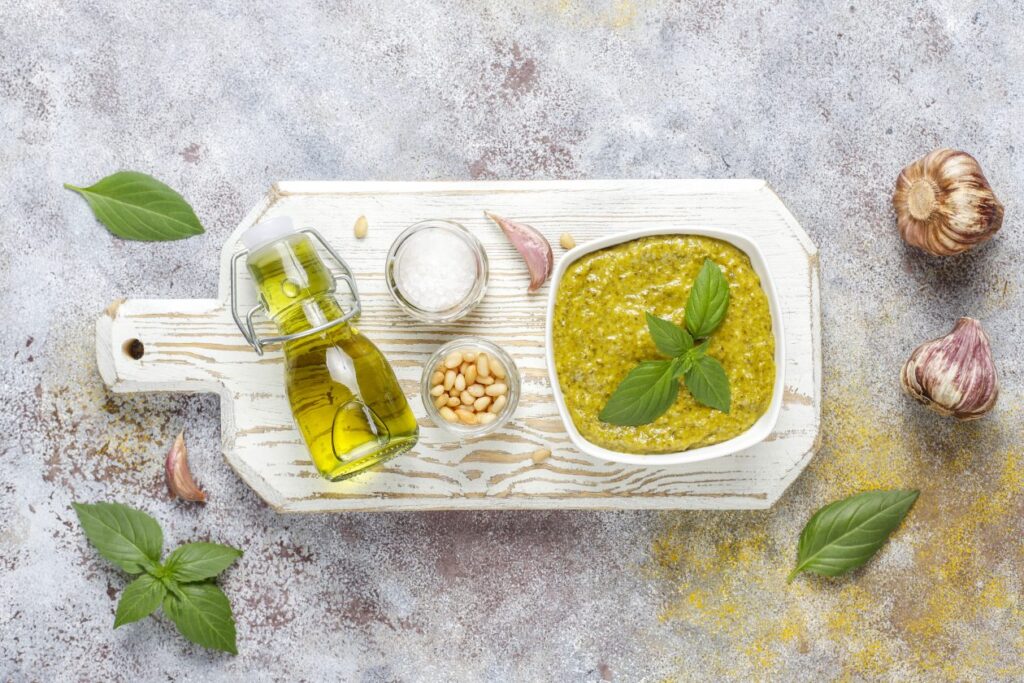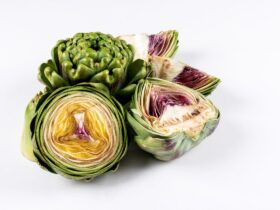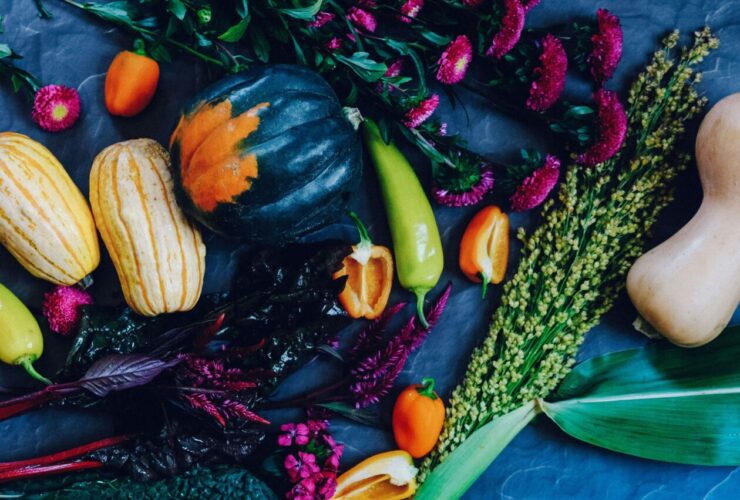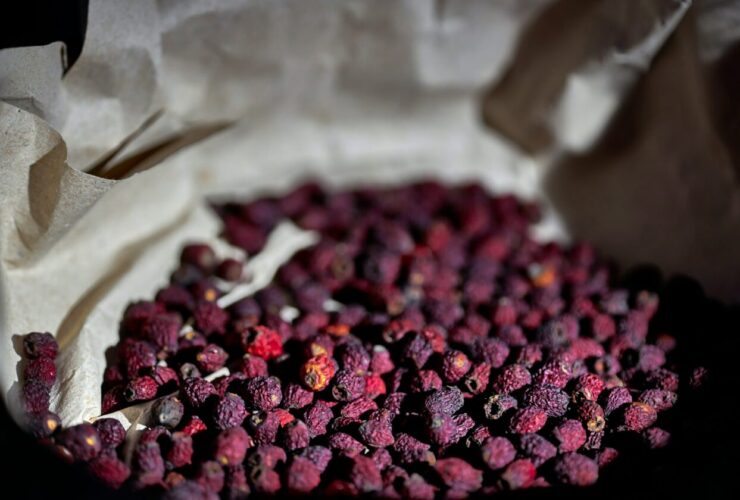Introduction
With its rich, aromatic aromas and vivid green color, pesto has long been a cherished mainstay in kitchens worldwide. However, Is pesto keto-friendly? This is a question that invariably comes up for people on a ketogenic diet. We must first examine the delicious sauce’s nutritional profile and its variety of culinary applications to provide an answer to this question.
If we look at the nutritional makeup of pesto, a lot depends on the ingredients and how well they work with a ketogenic diet. Pesto is a mix of flavors and nutrients typically made with fresh basil, garlic, olive oil, Parmesan cheese, and pine nuts. Olive oil adds heart-healthy monounsaturated fats, and basil supplies vital vitamins and antioxidants. Pine nuts provide a nice crunch, while Parmesan cheese lends a savory richness. But watch out for portion sizes—pesto’s high fat and calorie content may add up quickly.
Pesto’s culinary versatility makes it a delicious addition to many recipes, even beyond its nutritional profile. Pasta sauces, pizza toppings, and colorful salad dressings are just a few of the recipes that benefit from the unique flavor of pesto. Pesto is a tasty addition to grilled meats, cauliflower rice, and low-carb veggies for people on a ketogenic diet. Pesto is a valuable partner in pursuing delectable and nourishing food since, with a bit of imagination, it can transform even the most straightforward dishes into gourmet masterpieces. Therefore, while the answer to whether pesto is keto-friendly may differ based on personal dietary preferences and objectives, it is indisputable that pesto can improve flavor and satisfaction in the kitchen.
Understanding Pesto

Investigating the history of pesto reveals a gastronomic legacy deeply ingrained in the colorful scenery of Genoa, Italy. The Italian term “pestare,” which means “to crush,” is where the word “pesto” originates, giving homage to the age-old technique of manually pressing fresh ingredients into a fragrant paste. Although basil is still a key ingredient in traditional pesto, many other versions put different spins on this well-loved sauce. From the lush hills of Liguria to kitchens worldwide, pesto has developed into a multipurpose sauce beloved for its vibrant flavors and heady scent.
Traditional pesto recipes have a lot of basil, but contemporary versions use a variety of flavors and additives. There are countless ways to customize pesto, from earthy spinach and aromatic cilantro to peppery arugula. Nuts are also essential; almonds, walnuts, and pine nuts have unique tastes and textures. Many vegan and dairy-free pesto recipes are available for anyone with dietary requirements or preferences, demonstrating the versatility and inclusivity of this well-liked sauce. Pesto is a versatile condiment that may be eaten in various ways, including on pasta, sandwiches, and roast vegetables. Its flavor appeal transcends cultural boundaries and stimulates creative cooking.
Nutritional Breakdown

It’s essential to consider the nutritional makeup of pesto’s main ingredients, which include cheese, almonds, garlic, olive oil, and basil. Although these ingredients have several health advantages, they add calories and nutrients to the sauce. Approximately 160 calories are found in a typical serving of pesto, about two tablespoons, most of which are from fat. Healthy monounsaturated fats and vital omega-3 fatty acids are found in olive oil and nuts, like walnuts and pine nuts, and are suitable for heart health and general wellbeing. Furthermore, pesto has a well-rounded macronutrient composition due to its tiny amounts of protein and carbs, mostly from nuts and cheese.
When ingested in moderation, pesto might be a good choice for people on a ketogenic diet, which stresses low-carb, high-fat consumption to promote ketosis and fat burning. Traditional pesto has 1-2 grams of net carbs per serving. However, even these levels are usually trimmed because they include seasonings like garlic and basil. Furthermore, pesto’s high-fat content—mostly from nuts and olive oil—aligns nicely with the ketogenic diet, offering a plentiful supply of good fats that promote satiety and ketone production.
When incorporating pesto into a keto meal plan, think about serving it with grilled meats, low-carb veggies, or pasta substitutes like shirataki or zoodles that are ketogenic. People can include this tasty sauce in a well-balanced and fulfilling ketogenic diet by learning about the macronutrient makeup of pesto and its ketogenic compatibility.
Health Benefits of Pesto
The Mediterranean region is where pesto originated, and people have long cherished it for both its flavor and certain health advantages there. Rich in fruits, vegetables, nuts, olive oil, and fish, the traditional Mediterranean diet has been linked to several health advantages, such as a lower risk of heart disease, stroke, and chronic illnesses. This diet plan easily incorporates pesto, adding flavor to pasta, salads, and grilled veggies.
Antioxidants and monounsaturated fats included in its main ingredients, such as basil and olive oil, may help reduce inflammation, raise cholesterol, and promote cardiovascular health. People can take advantage of the heart-healthy nutritional benefits of the Mediterranean diet while also enjoying the savory flavor of pesto when they incorporate it into their meals.
Thanks to components like almonds, olive oil, and basil, pesto has a remarkable antioxidant content, which makes it one of its best qualities. Antioxidants are essential for preventing oxidative stress and eliminating dangerous free radicals from the body, which can lead to chronic illnesses and cellular damage. The main ingredient in pesto, basil, has potent antioxidants called flavonoids and polyphenols that have been connected to several health advantages, such as enhanced immune system performance and a lower chance of age-related illnesses.
Another essential component of pesto, olive oil, has a high concentration of phenolic compounds, which have potent antioxidant qualities and may help fend off oxidative damage and inflammation. Nuts like walnuts and pine nuts also provide essential vitamins, minerals, and good fats in addition to extra antioxidants. By including pesto in a well-balanced diet full of foods high in antioxidants, people can take advantage of its potential health benefits and enjoy a tasty method to boost overall wellbeing.
Addressing Concerns
Because many traditional pesto recipes contain nuts, especially pine nuts, eating pesto may be risky for people allergic to nuts. The symptoms of nut allergies can vary from minor to severe, ranging from gastrointestinal distress and skin rashes to potentially fatal anaphylaxis. For this reason, those who are allergic to nuts must use caution when eating pesto or any other meal containing nuts. Nut-free pesto substitutes taste good and are usually prepared with cheese, garlic, olive oil, and basil. This provides a tasty choice for people who are allergic to nuts. Furthermore, be sure pesto meals are safe to eat by carefully reading product labels and asking about ingredients while dining out.
Although store-bought pesto can be a tasty addition to meals, it can include high amounts of sodium, which can be problematic for people watching their salt intake, particularly those with heart disease or hypertension. When using store-bought pesto, try to choose low- or no-sodium varieties when possible to control the amount of sodium in it.
On the other hand, creating pesto from scratch gives you more control over the type and amount of ingredients, including the salt content. Use store-bought pesto sparingly, balancing it with other fresh ingredients so that the flavor is enhanced without coming from the salt in the pesto alone. People can prioritize their health and wellbeing while enjoying pesto as part of a balanced diet by being conscious of their sodium intake and making informed decisions.
Practical Tips and Usage
Despite being frequently linked to pasta dishes, pesto’s adaptability allows it to be used as a condiment for meals that follow the ketogenic diet. Try spreading some tasty pesto over it to add herbal freshness to grilled chicken, fish, or steak. Alternatively, add pesto to leafy greens, avocado, and cherry tomatoes for a colorful and filling salad that fits the keto diet. Additionally, pesto may enhance keto-friendly snacks. Try spreading it on low-carb crackers or dipping fresh veggies in it. People on a ketogenic diet can still enjoy the savory flavor of pesto while adhering to their dietary restrictions by experimenting with it differently.
People may have to choose between store-bought and handmade pesto for keto-friendly meals, each with various factors to consider. Customization is an advantage of homemade pesto; people can adjust the quantity and quality of ingredients (such as oil, nuts, and cheese) to suit their nutritional needs and dietary choices. However, store-bought pesto is more convenient and requires less preparation and work. To make sure they are compliant with a ketogenic diet, it is crucial to thoroughly study labels and choose store-bought pesto choices with the fewest amount of added sugars and preservatives. The decision between handmade and store-bought pesto ultimately comes down to dietary requirements, personal tastes, and the ideal ratio of ease to nutrition.
Is Pesto Keto Friendly?
A. Answer in Short: Yes, pesto can be keto-friendly when consumed in moderation and made with keto-compatible ingredients. Traditional pesto typically includes ingredients such as basil, pine nuts, olive oil, garlic, and Parmesan cheese, which are all generally acceptable in a ketogenic diet due to their low carbohydrate content. However, individuals following a keto diet should be mindful of portion sizes and the quality of ingredients used in pesto recipes to ensure they align with their dietary goals.
B. Answer in Depth: Pesto is a suitable option for those following a keto diet, given its primarily low-carb ingredients. Basil, the main herb in pesto, is rich in vitamins and minerals while low in carbohydrates, making it a nutritious choice. Pine nuts, another critical component, contain healthy fats and protein, contributing to satiety and helping to maintain ketosis.
Olive oil, a staple in pesto recipes, is a source of heart-healthy monounsaturated fats and adds richness to the sauce. However, individuals should be cautious of store-bought pesto varieties containing added sugars or fillers that could increase the carbohydrate content. Making homemade pesto allows for greater control over ingredients and can ensure that it remains keto-friendly. Additionally, incorporating pesto into meals with keto-approved foods like meats, fish, and low-carb vegetables can enhance flavor and provide variety while adhering to a ketogenic eating pattern.
Pesto can be a flavorful and versatile addition to a keto diet when prepared with the right ingredients and consumed in moderation. Opting for homemade pesto using fresh herbs, high-quality oils, and minimal added sugars can help individuals maintain their desired macronutrient ratios while enjoying this classic sauce’s taste and health benefits. By being mindful of portion sizes and ingredient choices, individuals can confidently incorporate pesto into their keto meal plans as part of a balanced and satisfying eating regimen.
FAQ about Pesto, Keto, and Weight Loss
Q: Is pesto high in carbs?
A: Pesto can vary in carbohydrate content depending on the ingredients used. Traditional pesto made with basil, olive oil, pine nuts, garlic, and Parmesan cheese tends to be relatively low in carbohydrates, making it suitable for low-carb diets like keto.
Q: Is pesto OK for weight loss?
A: Pesto can be a flavorful addition to a weight-loss diet when consumed in moderation. Its ingredients offer beneficial nutrients and healthy fats, but portion control is critical due to its calorie density. Pairing pesto with nutrient-rich, low-calorie foods like vegetables can support weight loss goals.
Q: Are pine nuts OK for keto?
A: Pine nuts are generally acceptable for a ketogenic diet due to their low carbohydrate and high fat content. They provide healthy fats and protein, making them a satisfying and nutritious addition to keto meals.
Q: Can I eat basil on keto?
A: Basil is a keto-friendly herb low in carbohydrates and can be incorporated into various keto dishes. It adds flavor and nutrients without significantly impacting carbohydrate intake.
Q: Is hummus good for keto?
A: Traditional hummus made from chickpeas is not typically considered keto-friendly due to its relatively high carbohydrate content. However, variations made with lower-carb ingredients like avocado or cauliflower can suit those following a keto diet.
Q: How unhealthy is pesto pasta?
A: Pesto pasta can be high in calories and carbohydrates, especially if made with refined pasta and excessive amounts of pesto sauce. Opting for whole grain or alternative pasta options and practicing portion control can help make pesto pasta healthier.
Q: Is it OK to eat pesto every day?
A: Consuming pesto in moderation as part of a balanced diet is generally safe for most individuals. However, it’s essential to vary your diet to ensure you get a wide range of nutrients from different foods.
Q: Can I have mayo on keto?
A: Mayonnaise can be compatible with a keto diet, as it is high in fat and low in carbohydrates. However, choosing mayonnaise made with healthy oils and avoiding varieties with added sugars or fillers are essential.
Q: Is pesto healthier than pasta sauce?
A: Pesto and pasta sauce differ in nutritional composition, with pesto typically containing more healthy fats from olive oil and nuts, while pasta sauce may have a higher carbohydrate content from added sugars. Both can be part of a healthy diet when consumed in moderation and with nutrient-dense ingredients.
Q: Can you have olives on keto?
A: Olives are low in carbohydrates and healthy fats, making them suitable for a keto diet. They can be enjoyed as a snack, added to salads, or incorporated into keto-friendly recipes.
Conclusion
Finally, pesto is a flexible and nutrient-dense choice for people on a ketogenic diet. Traditional pesto provides a delicious balance of healthful fats, proteins, and flavor. Its significant ingredients usually include basil, olive oil, almonds, garlic, and Parmesan cheese. Pesto adds flavor and nutrients to various keto-friendly foods, but it’s important to watch portion proportions because of its high-calorie content. Spreading pesto on low-carb crackers, drizzling it over grilled meats and veggies, or incorporating it into zucchini noodles are all delicious and nutritious ways to enhance meals without going against the ketogenic diet.
Furthermore, pesto has significant health benefits in addition to its culinary appeal. Since pesto contains heart-healthy monounsaturated fats from olive oil and basil antioxidants, it fits well with Mediterranean dietary patterns, which have been linked to several health benefits, including a lower risk of inflammation and cardiovascular disease. Through moderation and a focus on premium ingredients, people can enjoy the delectable taste of pesto while benefiting from its health benefits. Incorporating pesto into a comprehensive ketogenic diet highlights the pesto’s status as a tasty and nutritious food that offers a variety of advantages for health and palate.
References:
(1) Pesto
https://en.wikipedia.org/wiki/Pesto
(2) The Best & Worst Pesto Sauces—Ranked!
https://www.eatthis.com/best-pesto-sauce/
(3) Is Pesto Healthy? Here’s What a Dietitian Says
https://www.eatingwell.com/article/7896107/is-pesto-healthy-heres-what-a-dietitian-says/
Was this helpful?

Joseph Emb, RDN
Founder of StyleVitally.com | Registered Dietitian & Wellness Advocate
What I Cover:
I’m passionate about connecting nutrition science and everyday wellness to help people live healthier, more vibrant lives. I write about evidence-based nutrition, mindful eating, sustainable lifestyles, and holistic well-being at StyleVitally.com.
My Background:
The University of Texas in Austin, where I earned my Dietetics diploma, laid the groundwork for my nutrition and health career. My training and hands-on experience taught me the science and art of using nutrition to enhance health and well-being.
Professional Journey:
I’m an RDN with lots of experience. I’ve helped people seeking tailored nutritional recommendations in clinical settings and community outreach programs. My constant learning and professional development ensure that my recommendations are always based on the latest evidence.
Ethical Commitment:
My practice prioritizes integrity. My content is transparent and objective, following the most significant ethical standards. I can give my audience unbiased advice because I’m not affiliated with food businesses or industry associations. I want to help people make informed health decisions that match their values and ambitions.
Join Me on the Wellness Journey:
Join me on the path to vitality and well-being, whether facing nutritional issues, seeking sustainable lifestyle changes, or simply wanting a better, happier you. We’ll discover how diet, mindfulness, and holistic well-being can maximize your potential.









